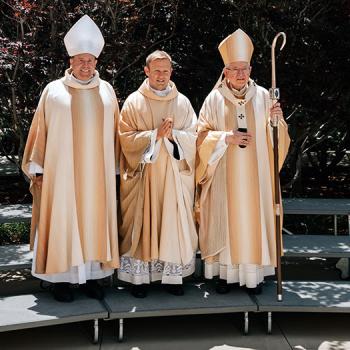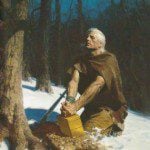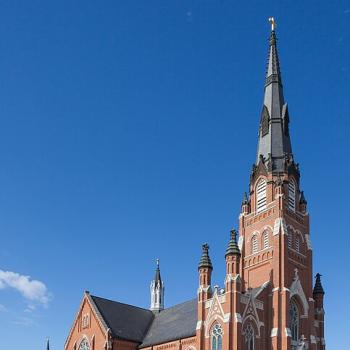MYTH #7: Pilgrims dressed in black.
Not only did they not dress in black, they did not wear those funny buckles, weird shoes, or black steeple hats. So how did we get the idea of the buckles? Plimoth Plantation historian James W. Baker explains that in the 19th century, when the popular image of the Pilgrims was formed, buckles served as a kind of emblem of quaintness. That's the reason illustrators gave Santa buckles. Even the blunderbuss, with which Pilgrims are identified, was a symbol of quaintness. The blunderbuss was mainly used to control crowds. It wasn't a hunting rifle. But it looks out of date and fits the Pilgrim stereotype.
MYTH #8: Pilgrims, Puritans -- Same Thing
Though even presidents get this wrong -- Ronald Reagan once referred to Puritan John Winthrop as a Pilgrim -- Pilgrims and Puritans were two different groups. The Pilgrims came over on the Mayflower and lived in Plymouth. The Puritans, arriving a decade later, settled in Boston. The Pilgrims welcomed heterogeneousness. Some (so-called "strangers") came to America in search of riches, others (so-called "saints") came for religious reasons.
The Puritans, in contrast, came over to America strictly in search of religious freedom. Or, to be technically correct, they came over in order to be able to practice their religion freely. They did not welcome dissent. That we confuse Pilgrims and Puritans would have horrified both. Puritans considered the Pilgrims incurable utopians. While both shared the belief that the Church of England had become corrupt, only the Pilgrims believed it was beyond redemption. They therefore chose the path of Separatism. Puritans held out the hope the church would reform.
MYTH #9: Puritans hated sex.
Actually, they welcomed sex as a God-given responsibility. When one member of the First Church of Boston refused to have conjugal relations with his wife two years running, he was expelled. Cotton Mather, the celebrated Puritan minister, condemned a married couple that had abstained from sex in order to achieve a higher spirituality. They were the victims, he wrote, of a "blind zeal."
MYTH #10: Puritans hated fun.
H.L. Mencken defined Puritanism as "the haunting fear that someone, somewhere, may be happy!" Actually, the Puritans welcomed laughter and dressed in bright colors (or, to be precise, the middle and upper classes dressed in bright colors; members of the lower classes were not permitted to indulge themselves -- they dressed in dark clothes). As Carl Degler long ago observed, "The Sabbatarian, antiliquor, and antisex attitudes usually attributed to the Puritans are a 19th-century addition to the much more moderate and wholesome view of life's evils held by the early settlers of New England."
This article was first published by History News Network and is reprinted under the C.C. License.
Rick Shenkman is the editor of the History News Network.




